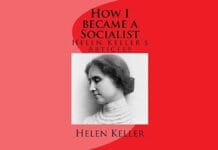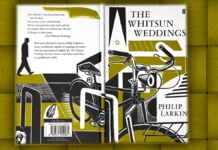A curriculum vitae or CV (and sometimes called a vita) is an academic resume that highlights your scholarly accomplishments. A CV provides the employer with a clear outline of your accomplishments so they can determine whether you’re a good fit for their needs.
Features of a CV
While your CV should be specific to your background and tailor to the job for which you’re applying, there are several steps you can take to ensure you write an effective CV.
Most CVs include the following information
- Contact information
- Academic history
- Professional experience
- Qualifications and skills
- Awards and honours
- Grants and fellowships
- Publications
- Professional activities and affiliations
- Volunteer work
- References
- Personal information (optional)
- Hobbies and interests (optional)
Contact Information
This includes your full name, phone number and email address. Including your physical address is optional.
Academic History
This can include your post-doctoral programs, graduate school, undergraduate school and high school. Only include your most recent two educational experiences. Dates attended is optional.
Professional Experience
List the company or organization, job title and dates employed starting with your most recent job. List your job duties, experience gained and achievements. Use numbers to measure your impact when possible.
Skills and Qualifications
This can be in a separate skills section. Reread the job description to highlight the most important skills employers are looking for. These can include both hard and soft skills that make you the best candidate for the job.
Awards and Honours
Use this section to outline your achievements in the field related to your application. Start with the award name followed by the year awarded, the organization that gave you the award and details about the award such as how often the award is given, how many people receive it, etc.
Grants and Fellowships
Include the title of agency, projects for which funds were awarded, and amounts.
Publications
Include relevant citations of presentations, papers, studies, books or other publications important to your professional history. For publications, include authors, date published, summary, volume, page and DOI number. For presentations, include the title, date and location of the presentation.
Professional Activities and Affiliations
List service activities, committee memberships, administrative work, lectures, professional workshops, editorial activities, and any other professional activities in which you’ve engaged. This should include the name of the organization, geographic location or chapter and dates of active membership. Also, list any professional societies with which you’re affiliated.
Volunteer Work
List the volunteer work in which you took an active role.
References
Provide names, phone numbers, addresses, and e-mail addresses for your referees. Ask their permission beforehand. Be sure that they will speak highly of you.
How to Write a Simple CV
Present items chronologically within each category of the CV, with the most recent items first. Your curriculum vitae is a statement of your accomplishments, and most importantly, is a work in progress. Update it frequently and you’ll find that taking pride in your accomplishments can be a source of motivation.
- Include your contact information.
- Detail your academic history in reverse-chronological order
- Record your professional experience
- Include relevant skills and qualifications
- List honours and awards
- Include relevant publications and presentations
- List your professional activities and affiliations
Some employers, especially post-secondary institutions, may offer their CV template and CV examples to help make sure you include all required information in the format they prefer. Before you submit your application, look for any special CV guidelines the employer has outlined. For example, some institutions may require you to list only relevant coursework, fieldwork, dissertations and professional references.
Before submitting your job application, be sure to thoroughly review your CV for any errors or inconsistencies. Consider asking a trusted colleague or professional mentor to review it as well—especially if they are experienced in the industry you’re applying to. A second opinion can be useful in helping you craft a well-polished CV.
Resume and CV
The CV presents a full history of the academic credentials and professional experience of the candidate. Unlike a resume, which is one to two pages in length, a curriculum vitae grows in length throughout your academic career. A resume, on the other hand, presents a concise picture of skills and qualifications for a specific position. It focuses on the most relevant professional experiences for the particular job for which one applies.
If you’re practised in writing resumes, you may be tempted to shorten your CV to keep it to one page. However, because CVs require so much information, they’re typically multiple pages in length. In other words, don’t cut crucial details to save space.
A CV and resume are similar in that they’re both documents that summarize your professional history, education, skills and achievements. They’re also both documents you might provide an employer for consideration for an open position. It is important to note that in the United States and most of Europe, resumes and CVs are not interchangeable. A resume is a shorter-form document that provides a concise overview of your previous roles, skills and details about your education. (The French word résumé translates to “abstract” or “summary.”) A CV, on the other hand, is typically a longer, more detailed document focused largely on academic coursework and research. There are a few exceptions, however. In India, South Africa and Australia, the terms CV and resume are interchangeable.
CV Example Template
CURRICULUM VITAE
Joe Smith
1234 Main Street, Atlanta, GA 30308
770-555-1234
joe.t.smith@email.com
Education
Doctor of Veterinary Medicine Degree, 2018
University of Texas College of Science, Austin, TX
Professional experience
University of Southern California
Professor, Herman Ostrow School of Veterinary Sciences | 2012–2018
Taught multiple undergraduate and graduate courses in veterinary sciences.
Fostered student commitment to lifelong learning and excellence in veterinary sciences.
Acted as a student advisor to first-year veterinary school students.
Skills and qualifications
Team leadership
Seminar instruction
Fluent in English and Spanish
Specialization in livestock science research and development
Awards and honours
AVMA Advocacy Award, 2018
AVMA Animal Welfare Award, 2016
Publications and presentations
Yang, J., Sanchez, C., Patel, A., Johnson, L., (2017) “Study of cocoa product component theobromine and danger to canines.” Journal of Modern Veterinary Medicine. 272: 1234-56789.
Professional associations and affiliations
American College of Laboratory Animal Medicine (2013–Present)
American Veterinary Medical Association (2011–Present)




























